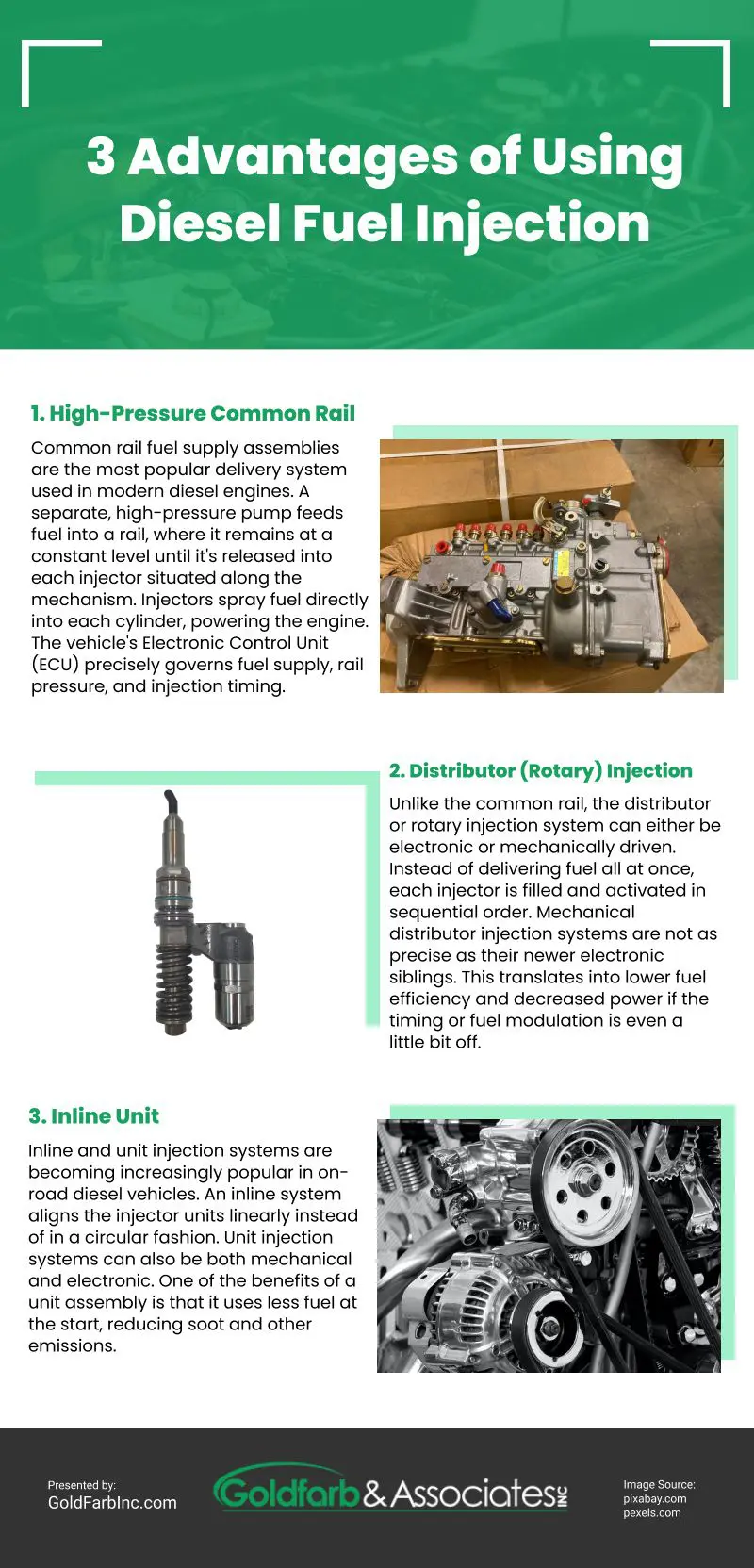
The Diesel engine, which was developed in the late 1800s, has used fuel injection in one way or another to provide power and fuel economy to some of the largest (and smallest) vehicles in the world. Diesel engines that use combustion ignition (CI) produce more energy per stroke and burn less fuel than their counterparts that use spark ignition (SI). Today’s majority of automobiles have electronically controlled fuel injection timing and calibration, enabling them to comply with ever-tougher regulatory pollution rules.
Two Fuel Injection Methods
Direct and indirect fuel injection engines are the two main types. The pre-combustion chamber is a tiny, often spherical chamber where fuel and fast-moving spinning air are combined during the indirect injection. The fuel/air combination can heat up fast on a cold start thanks to a device called a glow plug that is frequently included in this chamber. The engine is powered by the explosion that starts in this tiny space and subsequently expands into the combustion chamber.
The Multiple Ways Your Car’s Fuel Injection Operates
Common Rail, Distributor (Rotary), and Inline Unit are the three main fuel delivery methods used by diesel cars and trucks to transport fuel from the pump to the injectors. Each of these many diesel fuel injection techniques has benefits and drawbacks.
1. High-Pressure Common Rail
The most common delivery method being utilized in contemporary passenger and commercial diesel engines is represented by this specific gasoline supply arrangement. The fuel is fed into a rail by a different, high-pressure pump, where it stays at a steady level until it is discharged into each injector placed along the mechanism. The gasoline is then shot straight into each cylinder using injectors, which turn on the engine.
Common rail systems provide better fuel efficiency, fewer pollutants, more power, and torque, and much less engine noise as benefits. But all of it comes at a significant cost since fixing electronic-controlled parts is sometimes more expensive and challenging. Common rail injectors must also have improved fuel quality and more regular filter replacements since they are more vulnerable to contaminants and clogging.
2. Distributor (Rotary) Injection
The distributor or rotary injection system can be physically or electronically operated, unlike the common rail. Each injector is loaded and turned on in turn, rather than being given fuel all at once. For each injector, a separate line of pressurized fuel is pushed through a single plunger that rotates off a cam disk in the mechanical distributor. A regulating device determines the precise firing sequence of the injectors, and the plunger then delivers high-pressure gasoline into those ports.
3. Inline Unit
The pump and injector are combined into a single part in unit injectors, also known as pump nozzles. Similar to the rotary assembly, the diesel camshaft controls the amount and timing of fuel supply and the order in which the injectors fire. As the name implies, an inline system aligns the injector units linearly rather than in a circular pattern. Prior to reaching the injector, where it is delivered into the cylinder at high pressure, fuel travels through your engine at a lower pressure. Both mechanical and electrical unit injection techniques are possible.
source: https://goldfarbinc.com/blogs/news/a-closer-look-at-different-diesel-fuel-injection-systems
Comments
Download this infographic.
